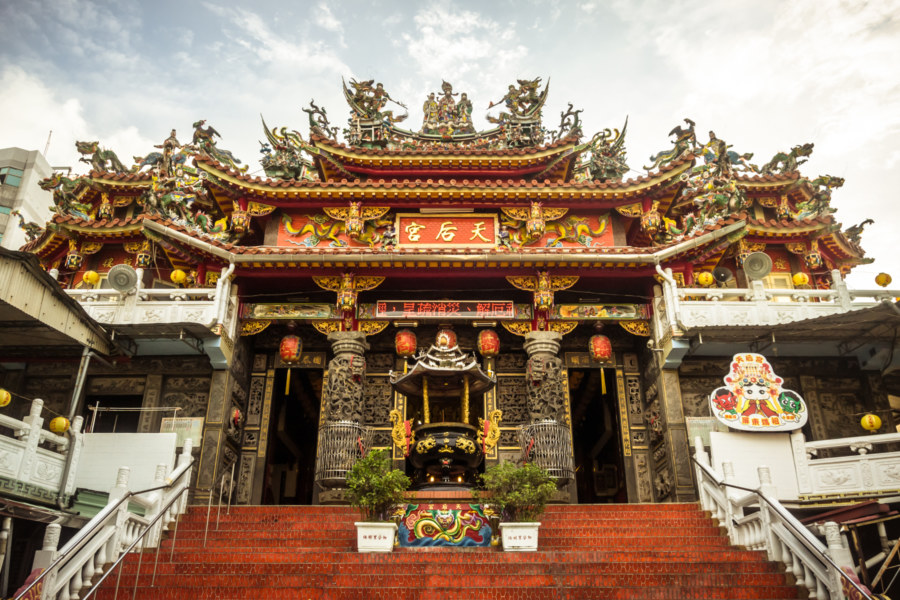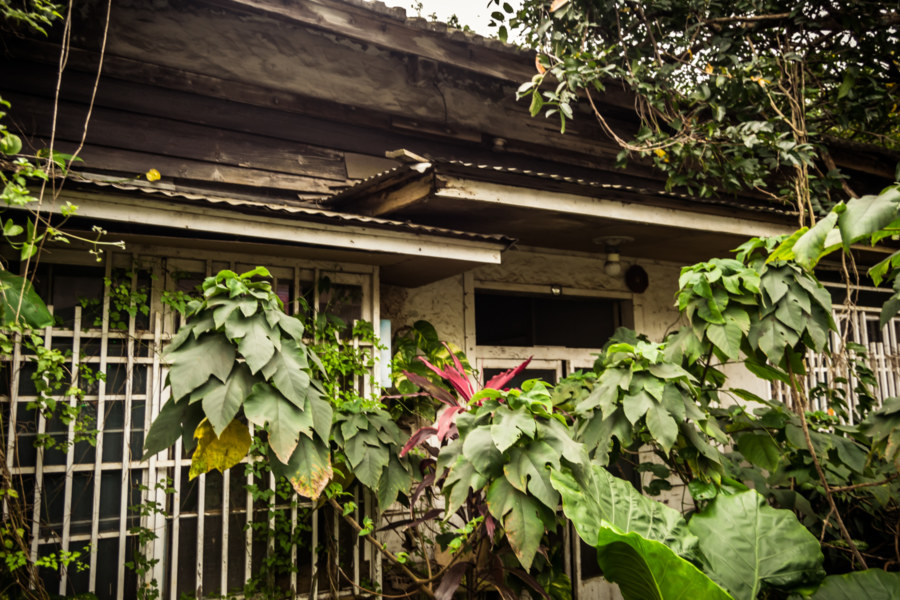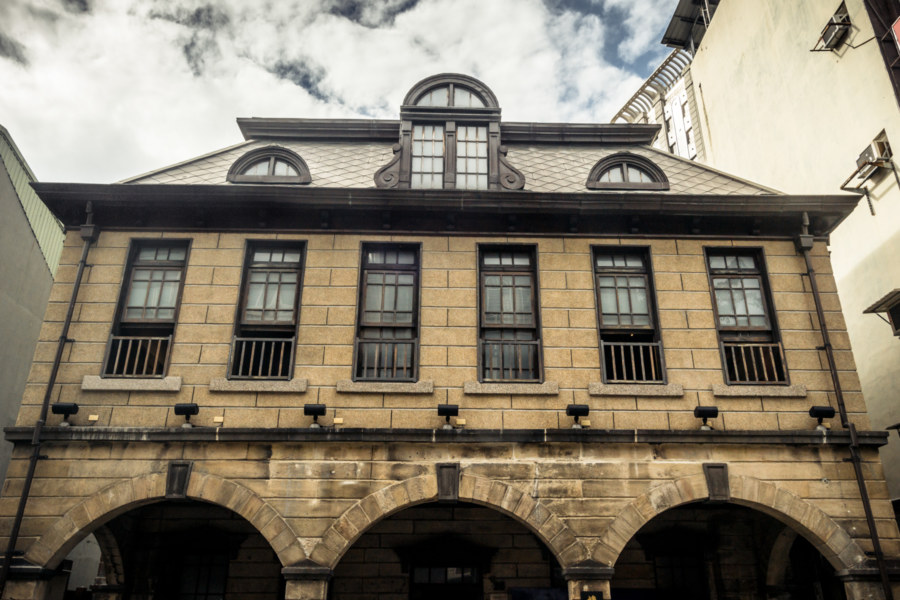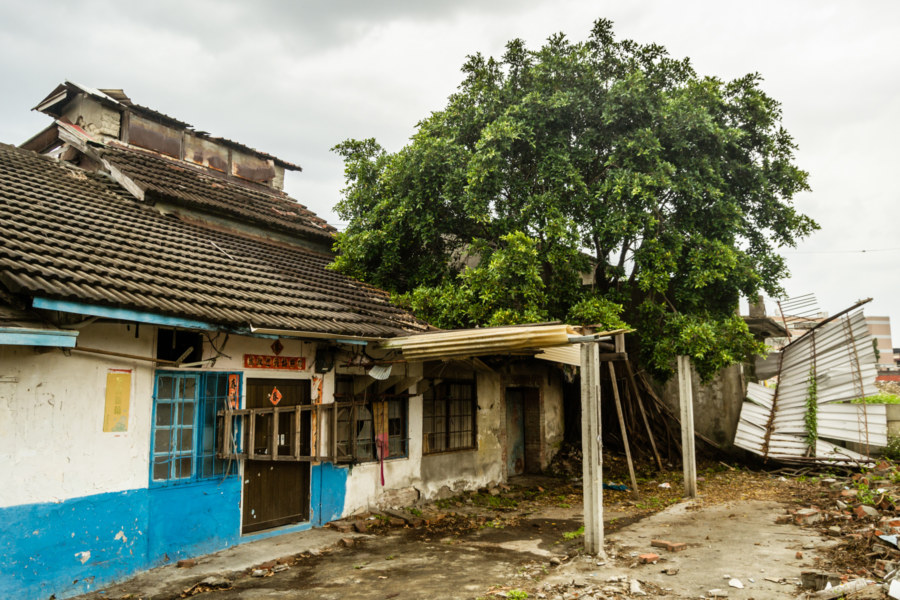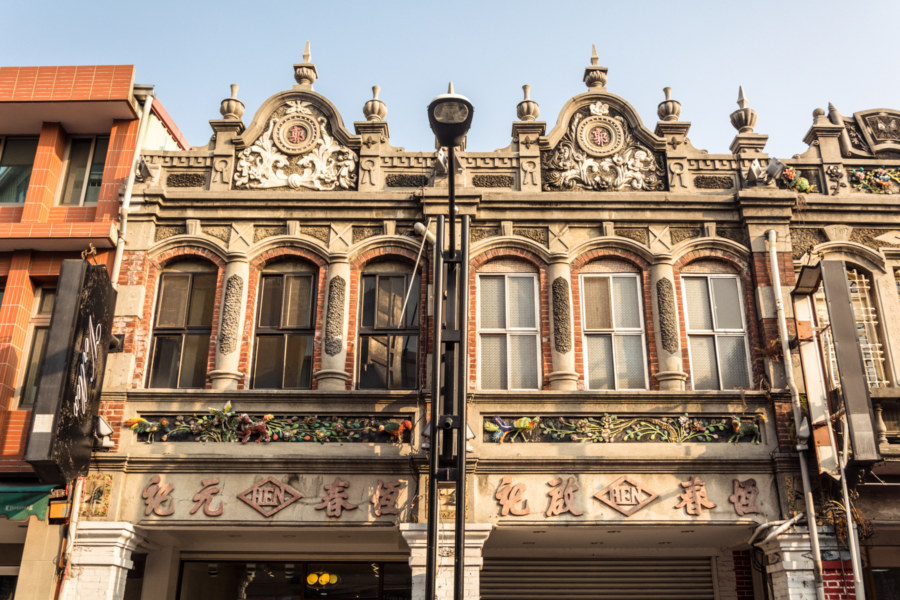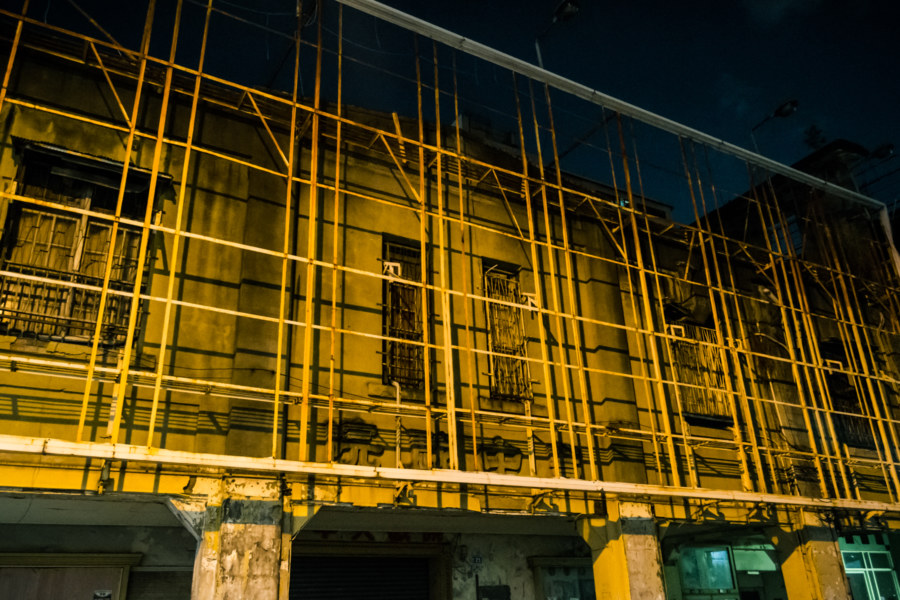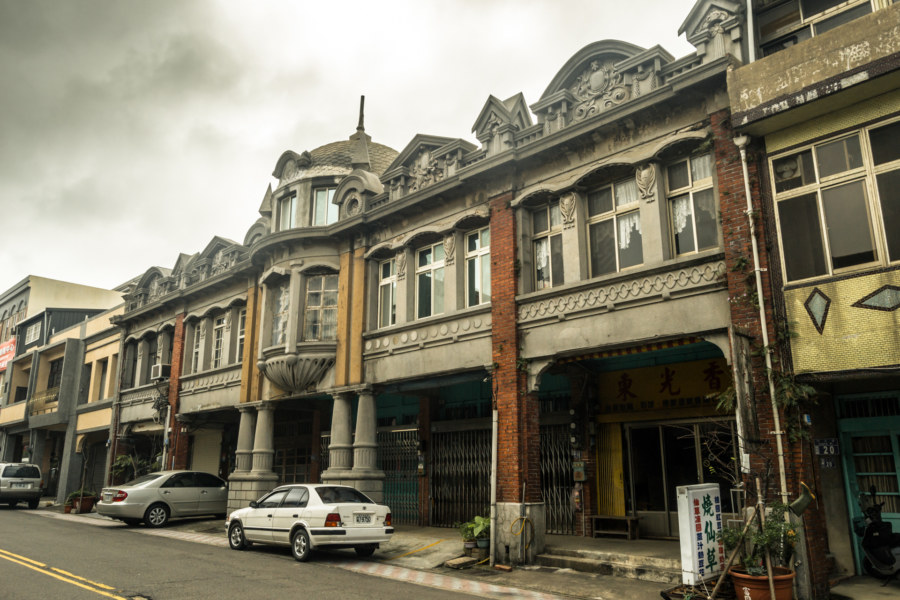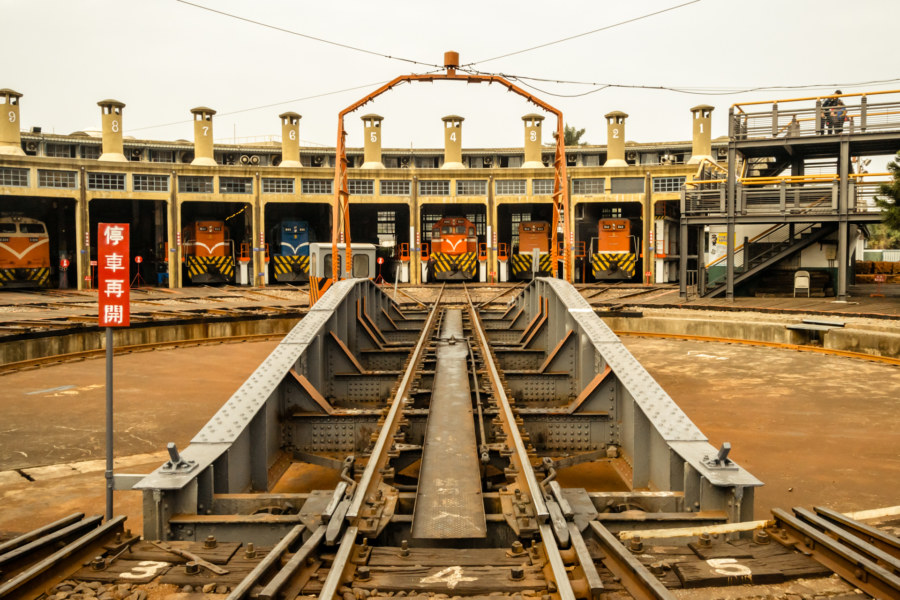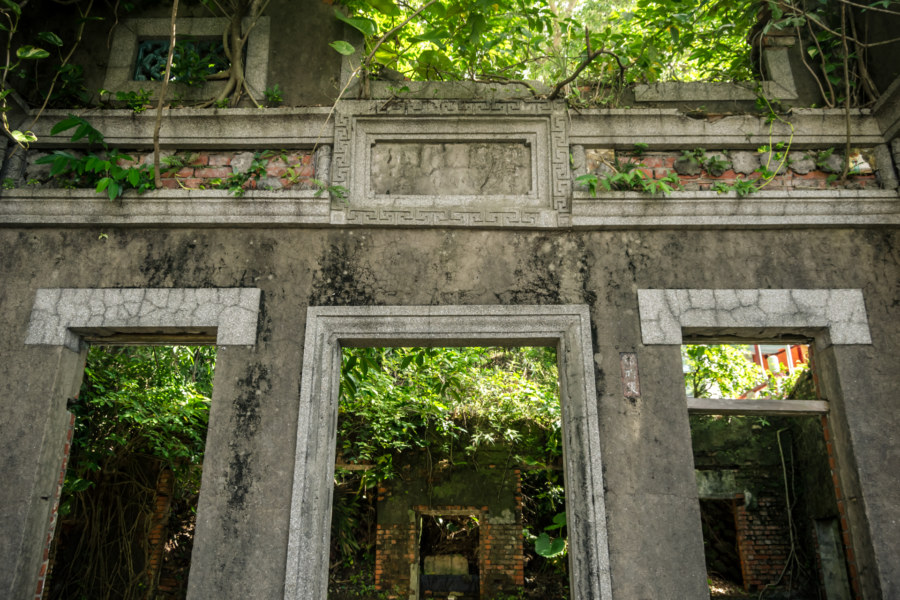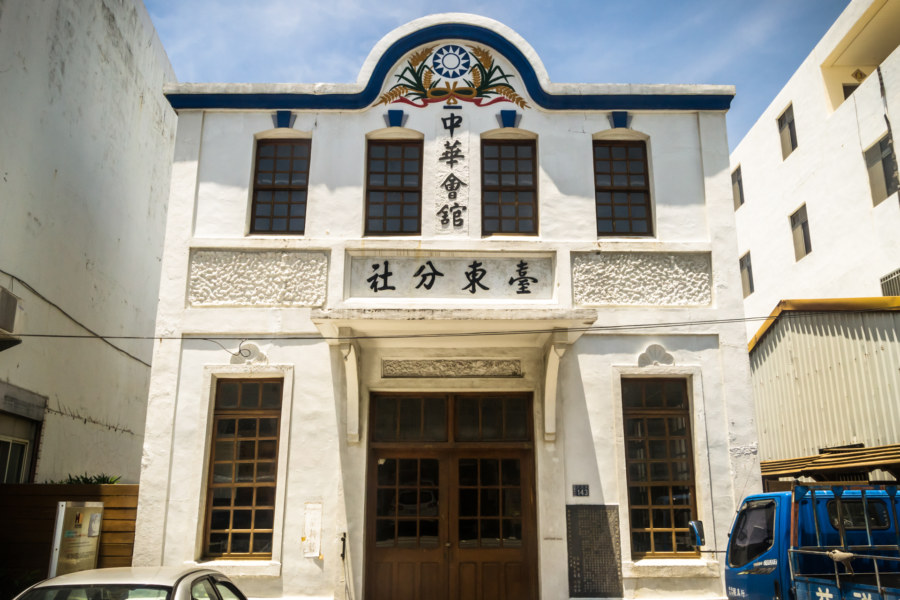One of the pleasures of bicycle touring in Taiwan is the freedom to change plans on impulse. On my second day of a trip down south in June 2015, having previously cycled across Kaohsiung from Tainan, I opted to hang out and see more of Pingtung City. A dire weather forecast calling for bouts of torrential rain had already introduced some uncertainty, but I was also curious about this city of 200,000, about which almost nothing is written in English. Finding an interesting place to stay sealed the deal—and so I checked out of a grimy hotel near the train station after breakfast, moved my stuff to the new place, and spent the day exploring the administrative center of Pingtung, the southernmost division of Taiwan.
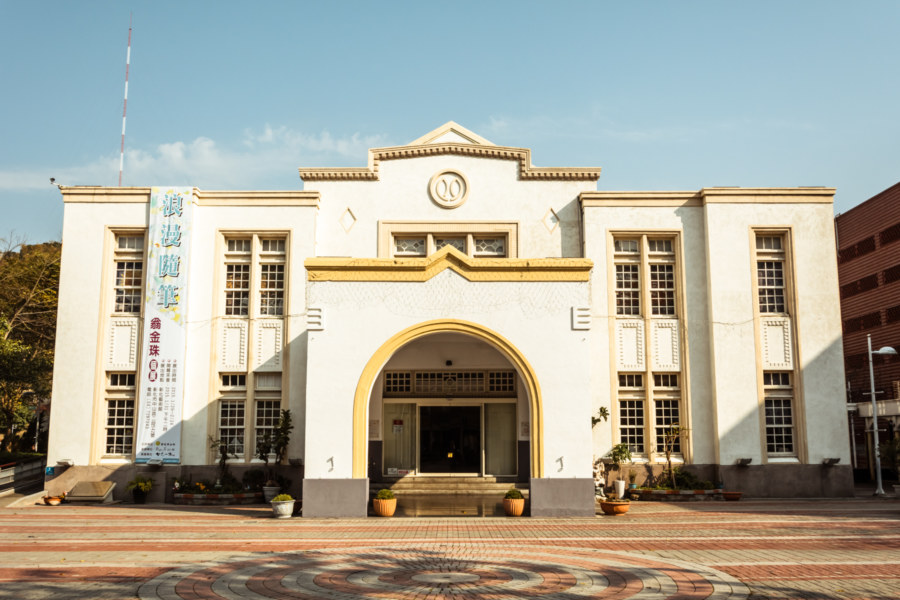
The Qing dynasty era ended when Taiwan was ceded to Japan with the signing of the Treaty of Shimonoseki at the conclusion of the First Sino-Japanese War in 1895. The Japanese invaded Taiwan that same year, wiping out all resistance and ushering in half a century of colonial rule.
For the purposes of this project I have chosen the neutral phrase Japanese Colonial Era (日治時代) to describe this time period but Chinese nationalists might prefer to describe it as an "occupation". The Japanese heavily developed and modernized Taiwan but not without cost to the local populace, particularly as the war effort ramped up in the 1930s. Following their defeat in World War II the Japanese were expelled from Taiwan and a new set of masters moved in. Thus began the KMT authoritarian era.
Songshan Railway Dormitories 松山台鐵宿舍
Songshan has long been a major hub for the railway industry in Taiwan. It is home to the Taipei Railway Workshop, a sprawling maintenance depot and rail yard presently undergoing renovations into a full-scale museum. The Western Trunk Line (縱貫線) also runs through the district, although it is completely underground now, following the path of Civic Boulevard (市民大道) for much of its length. I went poking around the area sometime in 2016 and stumbled upon a block of dilapidated homes wedged into a small parcel of land at the tail end of the railway workshop. It turns out these are former railway worker dormitories (宿舍) dating back to the Japanese colonial era.
Futai Street Mansion 撫臺街洋樓
In front of the historic Futai Street Mansion in central Taipei.
Futai Street Mansion 撫臺街洋樓 is a Japanese colonial era commercial building dating back to 1910. Located immediately to the south of Běimén 北門, recently the site of a major urban renewal project, it has been witness to more than a century of history here in the administrative heart of Taiwan. For more information I recommend reading this great article in Taiwan Today, this Taipei Times feature, and this post by Aris Teon. The mansion also has an official Facebook page if you’re interested in whatever events they might be hosting.…
Shuinan Tobacco Barn 水湳菸樓
Shuǐnǎn Tobacco Barn 水湳菸樓 is a historic Japanese colonial era building located in Beitun, Taichung. It is an “Osaka-style” tobacco barn (named after Osaka Castle) much like these more famous examples from Meinong. Nobody seems to know for sure when it was built, though this article claims it is a century old. Without better information I would say the 1930s are a safe bet—that’s when industrial-scale tobacco cultivation was spreading all over central and south Taiwan—but it might be older than that.
Taiping Old Street 太平老街
Taiping Old Street (太平老街) is an unusually long stretch of Japanese colonial era shophouses in central Douliu, the administrative seat of Yunlin, Taiwan. Located not far from the train station, this old street is remarkable for its length (600 meters long), consistent architectural style (almost entirely local variations on Baroque Revival), and relatively good state of preservation. Despite this, it is not a huge attraction, which is just as well if you’re not a big fan of mass tourism in Taiwan.
Fengzhong Theater 豐中戲院
Fēngzhōng Theater 豐中戲院 is one of many abandoned theaters in downtown Taichung. Located a stone’s throw away from Taichung Station, this theater was originally the Taiwan Opera Theater 台灣歌劇戲院, a performance venue founded at the very end of Japanese colonial rule in 1944. According to this source the name was changed to Fengzhong Theater when it was converted for use as a cinema in 1953. It was in continuous operation until 2004 when it was closed and finally abandoned.
Fugang Old Street 富岡老街
Fùgāng Old Street 富岡老街 is an obscure anachronism in the western part of Taoyuan, Taiwan. It extends from a railway station that opened during the Japanese colonial era in 1929 through the heart of this small Hakka town. The coming of the railroad brought prosperity to the area and several ornate shophouses were built around the station in a mishmash of architectural styles common at the time. Nowadays it is just another street in rural Taiwan, albeit one with a little more history than most, possibly because it is too unimportant a place for modernization to have swept away these vestiges of the past.
Changhua Roundhouse 彰化扇形車庫
One of the most extraordinary attractions in Taiwan is the historic Changhua Roundhouse 彰化扇形車庫, originally built in 1922 during Japanese colonial rule and still in operation today. Although information is hard to come by it seems that it might be the only roundhouse still operating in Asia—and certainly one of the oldest still in regular use anywhere in the world. Every other roundhouse I researched for this article has been abandoned, demolished, repurposed, or converted into a museum—and those rare few that are still operational have been mighty hard to date. As such, the Changhua Roundhouse is a dream to visit for a railway enthusiast like myself, particularly since the ambiance hasn’t been ruined by the sort of tacky treatment you’ll often find at Taiwanese tourist attractions. After signing in with the guard at the gate I had free run of the place—and as you can see from some of the following photos, nobody minded me getting shockingly close to moving trains as the mechanics went about their daily routines.
Khoo Tsu-song Old House 許梓桑古厝
Khóo Tsú-song Old House 許梓桑古厝 is a scenic historic site atop a modest hill near Miaokou Night Market 廟口夜市 in Keelung. Built in 1931 while Taiwan was under Japanese rule, it is structured somewhat like a traditional Taiwanese three-sided courtyard home with some Western influences and building materials. Formally named Qìngyú Hall 慶餘堂, it was the residence of Khóo Tsú-song (1874–1945), an important figure in local politics and civic affairs during the Japanese colonial era. His name is rendered here in romanized Taiwanese Hokkien, in keeping with the conventions adopted by the Keelung cultural bureau.
Taitung Chinese Association 台東中華會館
The historic Chinese Association on Zhongzheng Road in Taitung City.
It never ceases to amaze me what can be learned from keenly observing the streets of Taiwan and following up with a little research online. I only spent one full day in Taitung City at the tail end of a bicycle trip down south this June but managed to chance across a number of interesting sights in that time, this historic building among them.
Located at 143 Zhongzheng Road 中正路, this is the Taitung Branch 台東分社 of the Chinese Association 中華會館, originally built in 1927 while Taiwan was under Japanese rule. A plaque out front features historic information in English (shocking in this part of the country) as well as a direct translation of the name, “Taitung Chunghua Hostel”, but it was more of a clubhouse or assembly hall, not a place to secure lodging for the night. Interestingly, the proper Chinese name is the same one used by the Chinese Consolidated Benevolent Association of America. Have a look at the photos…
